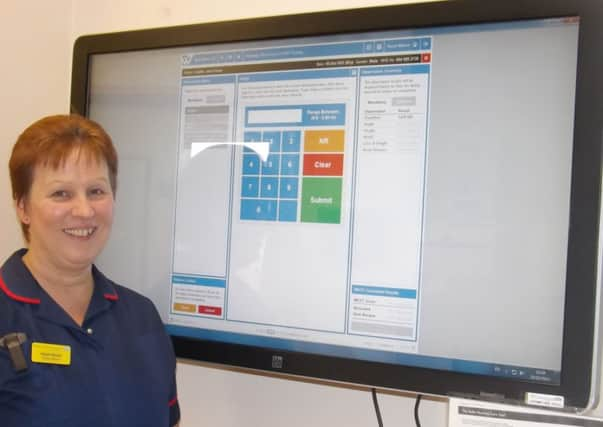Apples are helping with nutrition screening at hospitals


There isn’t a golden delicious, cox, or pink lady in sight though! Instead these are three colour-coded apples that appear on interactive, electronic boards that are on wards across Scunthorpe, Grimsby and Goole hospitals.
The green, amber and red electronic apples simply show staff at a glance the nutritional status of every patient on their ward, as well as when another Malnutrition Universal Screening Tool (MUST) assessment is due.
Advertisement
Hide AdAdvertisement
Hide AdQuality matron Hazel Moore, who leads on nutrition and hydration across Northern Lincolnshire and Goole NHS Foundation Trust, said the Trust had moved to the nationally validated MUST tool in April 2013 and the next move had been to integrate it with the organisation’s WebV system.
WebV is a bespoke ‘virtual ward’ system which was designed in-house and used by staff including nurses, doctors, therapists and pharmacists to improve the way patients are managed on hospital wards.
It provides access to test results, staff can see which patients are on which ward, under which consultant and whether they have any particular health needs, and it also flags when vital assessments need to be carried out. It also allows staff to view a whole ward or even an entire hospital virtually.
Hazel said: “Staff can at a glance look at the electronic boards and quite clearly see if a nutritional assessment has been carried out for a particular patient, what the score and whether any intervention needs to be carried out.”
Advertisement
Hide AdAdvertisement
Hide AdThe apples scores are: green, no risk of malnutrition; amber, at risk; and red, very high risk. These scores are used to identify the appropriate management plan which could include being referred to a dietitian, starting a food record chart and introducing fortified meals.
The Trust also has a comprehensive snack list which malnourished patients are encouraged to use, helping to boost their calorie intake between meals.
Hazel said: “Staff no longer have to use a paper-based system and instead can input the data onto the system. It works out the score and presents it as a colour-coded apple. It is simple, efficient, quick to use, clearly identifies who is at risk and also reminds staff when another assessment needs to be done.”
MUST is a five-step tool which identifies adults who are at risk of malnutrition. It looks at the patient’s body mass index (BMI), together with whether they have experienced unplanned weight loss recently and how acutely ill they are, an overall risk of malnutrition score is calculated.
Wards also use red trays which clearly identify those patients who require assistance at mealtimes or those patients where we need to monitor their nutritional intake.